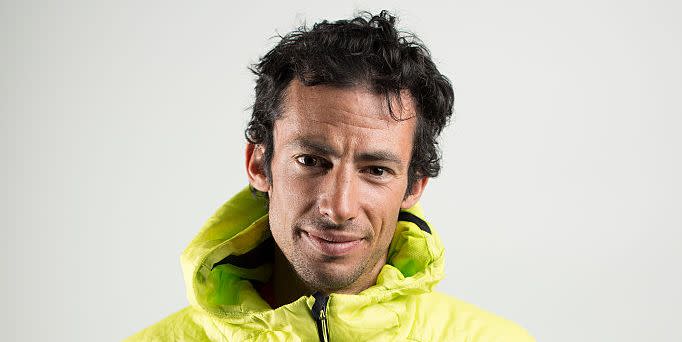6 ways to train like Kilian Jornet

Adapt your schedule to fit your circumstances
Even professional athletes have to make compromises. With a ultra-running wife and two young children, Jornet’s training window is smaller than it once was. His solution? Swapping longer outings (in his case, runs longer than four hours) for more frequent shorter ones. He wrote: ‘This year, our youngest daughter was at home all the time , and both my wife Emelie [Forsberg] and I were training seriously so we did organise our days alternating our training schedules, one from 8:30 to 12:00, and the other from 12:00 to 15:30. Then a second short session was possible when the girls were sleeping in the evening. With this, I couldn’t do long sessions but did try to accumulate distance with multiple short and middle sessions during the week.’
Know each run’s purpose
Whether you’re trying to break course records or simply get round a marathon, specificity matters. An effective training schedule, therefore, should be tailored to your goals. Are you chiefly looking to build endurance? Then you’ll want to be concentrating on lots of easy running, with a sprinkling of intensity work. If it’s a new parkrun PB you’re after, then something specific like 5 x 1km at target race pace, with 90 secs break in between, will help to get you there. As Jornet wrote, ‘When I do every workout, I’m thinking, “Why am I doing this workout? What’s the goal?” It’s not about going out and training hard but trying to focus on what really matters for that session.’
Conduct a regular fitness test
Kilian periodically runs a specific route and measures various things – time taken, lactate levels, etc – to check what shape he’s in. This test can be part of workout, he wrote, or it can be a workout in its own right. He wrote: ‘I think it is important to monitor the shape with real conditions besides the physiological measures. I do all my shape tests on the same route so it’s easy to compare, a route that doesn’t get too affected by conditions and that I can do easily at least one time a week.’
Lay a firm base
Jornet is a subscriber to having a base training period, followed by more specific training, tailored to the races he’s targeting. Base training will vary from runner to runner, based chiefly on running history and current fitness, but it mostly involves a period (perhaps 6-10 weeks) of easy aerobic exercise. The idea being that you create a large aerobic capacity, upon which you can add more high-intensity work further down the line. Jornet wrote:
‘In general I do make a training plan for the season with a general period to build an aerobic base (this can be done in ski, climbing, etc) followed by a specific period to build the specificities of trail running and then micro-periods to build the different capacities for each kind of event.’
Embrace easy running
It’s a classic mistake to run too many of your miles too hard. Most elites, including Jornet, roughly follow the 80/20 rule, which states that 80% of your running should be relatively easy and only 20% of it hard. This ratio holds for lower-mileage runners too. If you only do tough sessions, you’re missing out on some physiological gains, such as capillary density, that only happen via easy aerobic exercise. You are also increasing your risk of injury. The vast majority of Jornet’s training is relatively easy running (heart rate zones 1, 2 and 3). ‘I know I can absorb a great amount of volume,’ he wrote, ‘but if I do more speedwork for several continuous weeks [heart rate zones 4 and 5] I will get injured.’
Find the right diet for you
Nutrition is a divisive topic and there’s no perfect, one-fits-all solution. So listen to your body, follow science-backed advice and see what works best for you. That’s what Jornet does. ‘I think this has been one of my biggest improvements in the last few years,’ he wrote. ‘I started to be much more focused on daily nutrition for my characteristics and I think that has increased not only my performance level but the capacity of recovery. My daily diet is vegetarian, with a base of carbs in potatoes, rice, pasta, quinoa, bread, veggies, protein and fat from legumes, nuts, avocado, cheese, egg. And I take supplementation on Omega 3 and 6, Vitamin D and some probiotics.’
You Might Also Like


